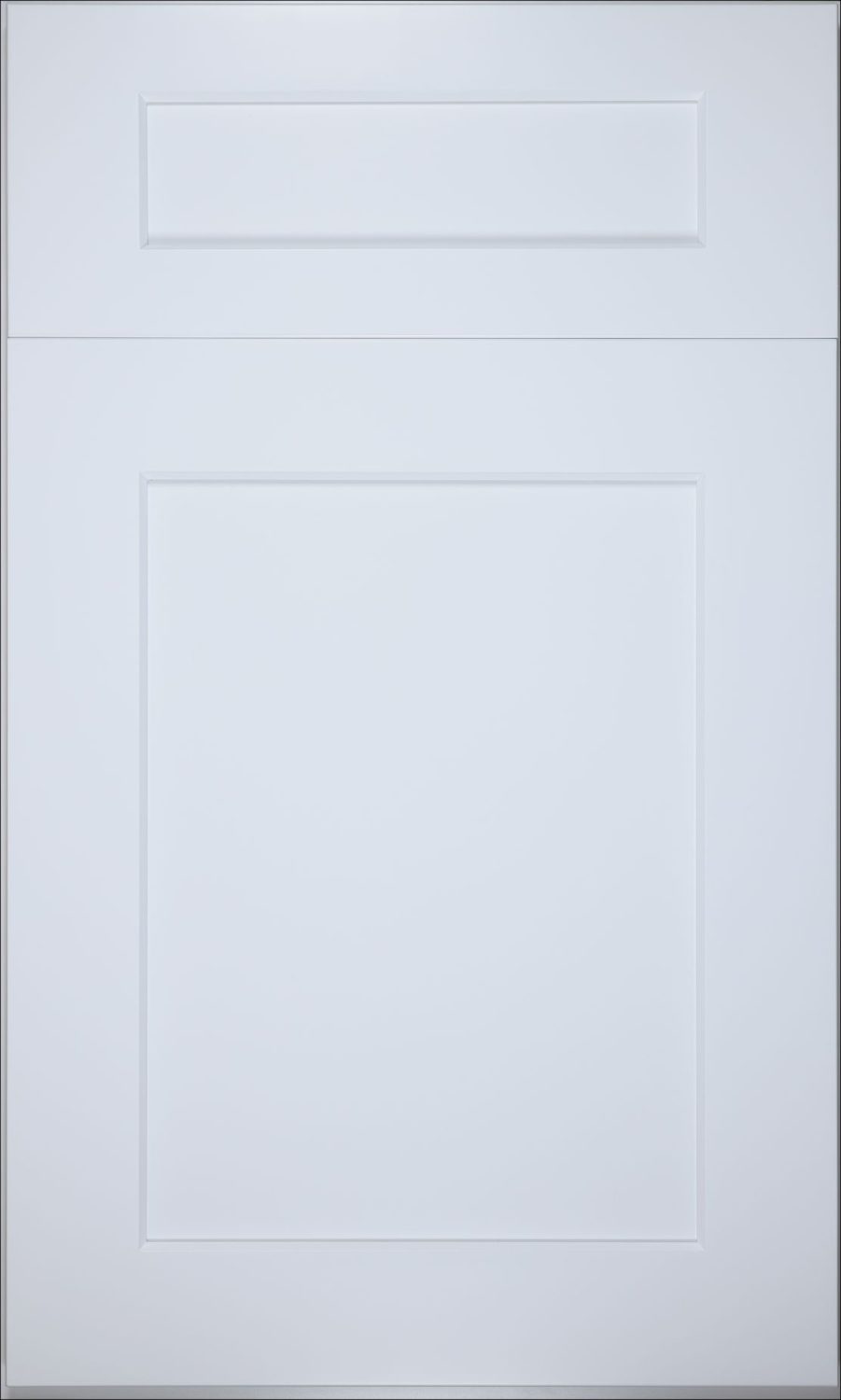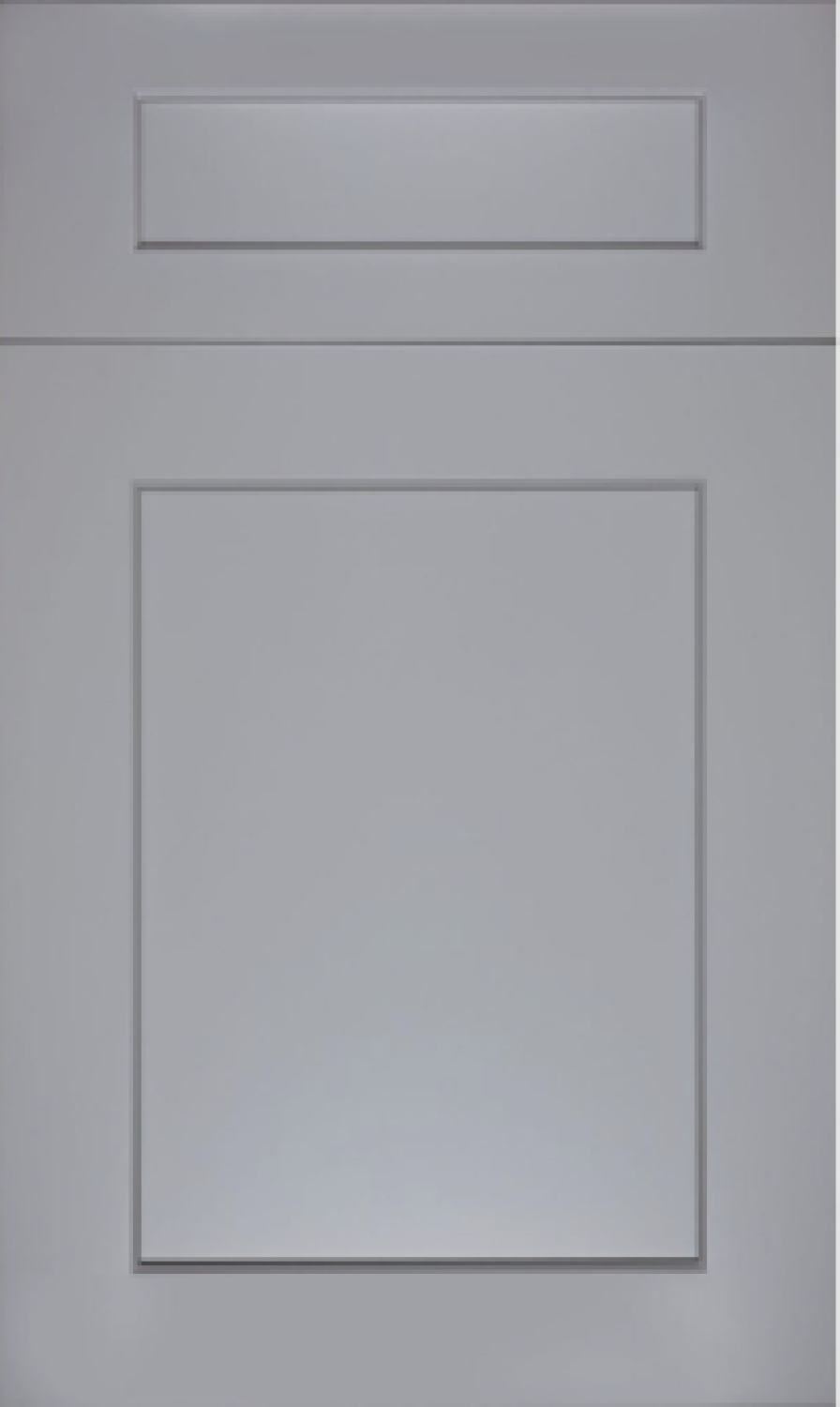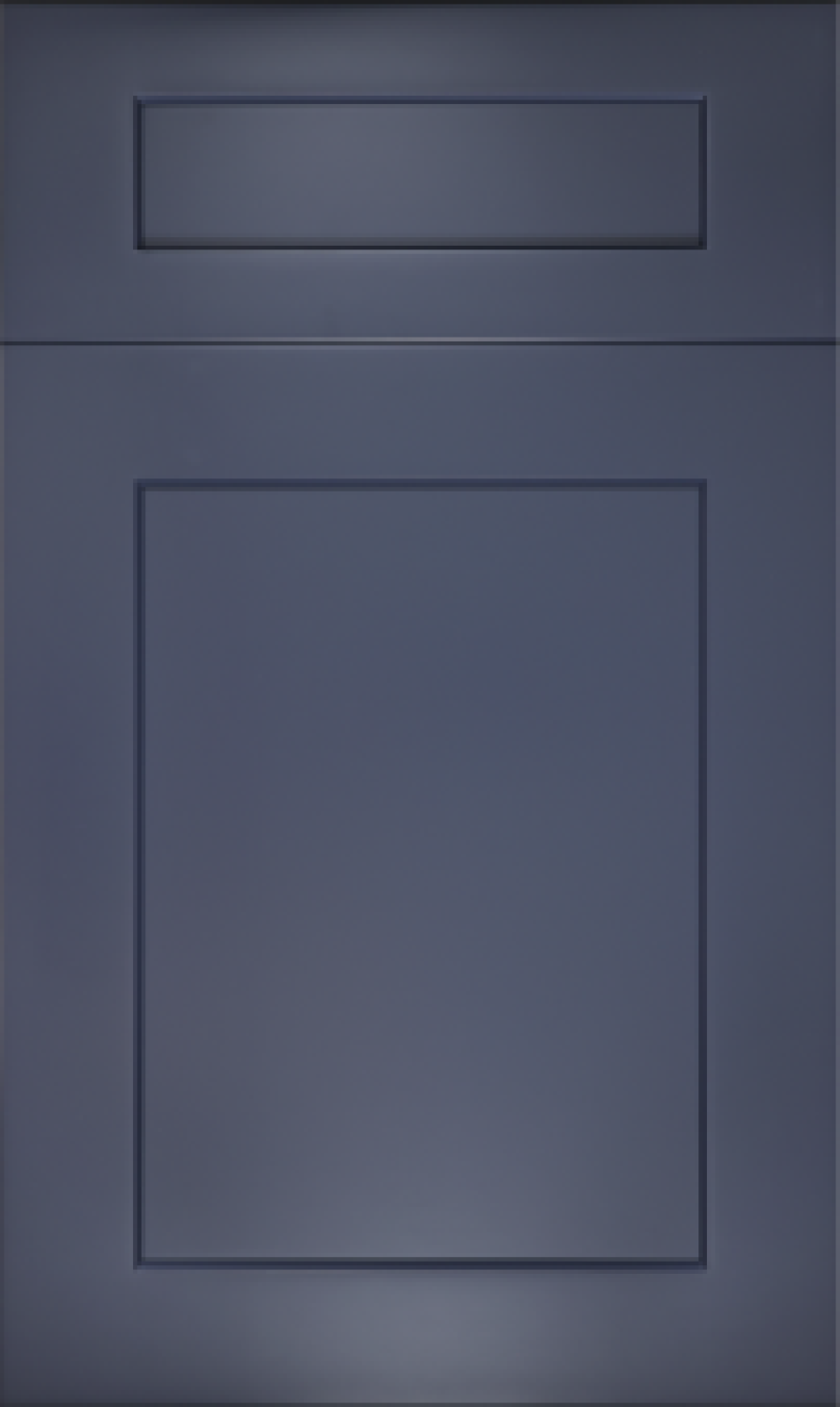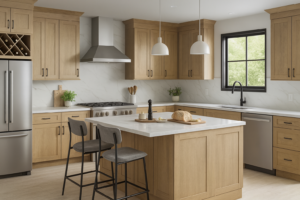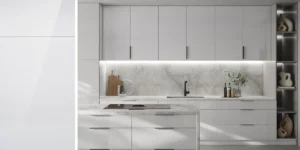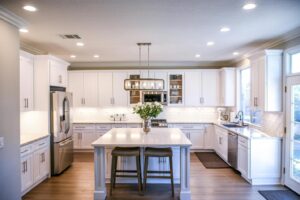If you’re looking to remodel a kitchen or manage a large-scale build, choosing the right cabinet door style is important. It influences not just how the kitchen looks, but also how the cabinets function and how smoothly they are installed.
There are three main kitchen cabinet door styles: Inset, partial overlay, and full overlay. Each style comes with its own pros and trade-offs in terms of construction, cost, storage space, and visual appeal.
This blog will discuss the difference between inset vs overlay cabinets, helping you choose the right style for both custom and high-volume kitchen builds.
Inset Kitchen Cabinets
Inset kitchen cabinets sit inside the frame instead of on top of it. This design means the door aligns flush with the front, creating a clean, built-in look. As the door fits exactly into the frame opening, this style requires precise craftsmanship and attention to detail during construction and installation.
Key Characteristics:
- Sits flush with the cabinet face frame
- Built to exact measurements for a tight fit
- Minimum gaps between components
Pros:
- Offers a high-end, custom-built appearance
- Fits well in classic or transitional kitchens
- Durable construction with long-lasting materials and tight joinery
- Gives a luxurious feel to the overall look
Cons:
- Higher cost due to the skill and time needed to build
- Slightly less storage space compared to overlay cabinets
- More maintenance requirements
Inset cabinets are popular in premium kitchen projects where appearance and build quality matter more than storage space or quick installation. However, these cabinets require experienced installers to maintain proper alignment, especially in homes where humidity can affect wood movement.
For builders and designers, inset doors work well in custom homes, boutique renovations, or kitchens where detail and craftsmanship are key to the overall design.
Overlay Kitchen Cabinets
Overlay cabinets feature doors that sit on top of the frame rather than inside. There are two subcategories in it: full and partial overlay. Let’s look at them in detail.
Full Overlay Cabinets
Full overlay kitchen cabinets provide a modern, polished look. The doors and drawer fronts nearly cover the entire face frame, creating a seamless appearance. This style is often used with frameless cabinet construction, where the face frame is eliminated entirely to maximize access and interior space. Frameless cabinets are commonly associated with European-style cabinetry, but the two are not identical: European-style cabinets refer more broadly to a design philosophy that includes frameless construction, sleek hardware, and minimalist finishes.
Key Characteristics:
- Seamless look
- Minimal gaps between doors and drawer fronts
- Ideal for contemporary and European-style kitchens
Pros:
- Works well in frameless cabinet systems
- Increases storage space due to minimal face frame interference
- Cost-effective for large-scale or ready-to-assemble (RTA) kitchen systems
- Easier to clean since there are fewer edges and surfaces.
Cons:
- Less room for error, as misalignments are more noticeable
- Requires precise hardware for the doors to stay aligned
- Not always the best fit for traditional-style homes
Full overlay cabinets are a great option for projects with high demand, especially when you need efficient use of space and a modern look.
Partial Overlay Cabinets
Partial overlay cabinets expose more of the cabinet frame. Doors are mounted to cover part of the opening, leaving about ½” to 1″ of the frames visible around each door and drawer.
Key Characteristics:
- Traditional style
- Easier to install and align
- Smaller openings
- No need for hidden hardware like knobs, pulls etc.
Pros:
- More forgiving during installation, great for homes with uneven walls
- Classic appearance fits a wide range of kitchen styles
- Cost-effective and simple to fabricate
Cons:
- Visible gaps between doors can interrupt the visual flow
- Not as seamless or space-efficient as full overlay or inset options
Partial overlay kitchen cabinets work well in budget-friendly remodels or transitional kitchen designs that mix modern and traditional elements.
Inset vs Overlay Cabinets: How to Choose the Right Style
Choosing between inset, partial overlay, and full overlay cabinets is more than a design decision. In large-scale kitchen planning and procurement, the right cabinet style affects your production timeline, installation process, cost structure, and end-user satisfaction. Let’s look at some key factors to consider for a successful project outcome.
Project Goals
Project goals help you choose the right cabinet frame. High-end homes or custom remodels often install inset cabinets, providing a classic look with clean lines, perfect for homeowners who appreciate fine details.
Partly overlay cabinets work well in rental units, quick flips, or transitional homes. They offer a clean appearance while allowing easy installation.
Modern developments and high-volume builds usually prefer full overlay or frameless styles. These cabinets support flat-pack efficiency and match sleek, minimalist trends.
Production Efficiency
The style of your cabinets affects how quickly you can make and put them together.
- Frameless full overlay cabinets are easy to scale for mass production. They’re also ideal for ready-to-assemble (RTA) models.
- Partial overlay is easy to install, even on walls that are not perfectly flat. This saves time during installation.
- Inset requires careful work and extra effort during production. Installers need to consider changes in humidity, as even small shifts can affect how the door aligns.
If you’re on a tight schedule or working with multiple units, always choose production-friendly options to make the process smoother.
Customer Design Preferences
Homeowners’ preferences greatly affect their choice of cabinets. Many people value craftsmanship and visual details. Inset cabinets match this preference, especially in traditional or high-end kitchens.
Others want a modern, smooth finish. Full overlay or frameless doors offer that look, making them popular in contemporary or Scandinavian-style designs.
On the other hand, partial overlay offers a practical look with broad appeal, especially for those who want a refresh without a full custom build.
Budget Constraints
A budget often limits your choices. Inset cabinets require expert craftsmanship and take longer to make, so they are more expensive. They are best for luxury homes or custom projects.
Full overlay cabinets offer a stylish option at a mid-range price. Partial overlay cabinets are usually the most affordable. They are a good choice for those with tight budgets or who prefer function over design.
Cabinet Style Breakdown
When planning a kitchen on a larger scale, the cabinet door style you choose affects more than just how things look. It also shapes how smoothly the installation goes, what the unit costs add up to, and how much usable storage you’ll have in the end.
Here’s a quick breakdown to help match each style to the right kind of project:
- Inset cabinets are best for premium custom homes. They suit those who need intricate details and want a timeless, high-end look.
- Partial overlay cabinets are a smart choice for rental units, budget renovations, or transitional kitchens that need to strike a balance between cost and design.
- Full overlay or frameless cabinets make sense in high-volume builds and modern developments. They’re also ideal for flat-pack kitchens like IKEA, where quick assembly and a clean, seamless style are priorities.
Tips for Selecting the Right Cabinet Door Style for Your Kitchen
When selecting the right cabinet door style for a kitchen, it’s important to consider more than just the visual appeal. Each style affects factors like assembly time, durability, and overall functionality. Whether you’re working on a custom project or a budget-friendly remodel, these tips can help you make the best choice for your needs:
- Frameless cabinets are quicker to assemble, especially with Ready-to-Assemble (RTA) kits, making them ideal for high-volume or fast-paced projects.
- Partial overlay cabinets offer flexibility, especially when dealing with imperfect walls. The gap between doors allows for easy adjustments during installation.
- Inset cabinets need precise humidity management because gaps may widen or narrow based on the surrounding conditions, which can impact their functionality.
- Full overlay cabinets provide more storage space due to their minimal face-frame interference, making them ideal for maximizing storage.
- Partial overlay doors are simpler to align and install. This makes them an ideal choice for DIY projects or projects with tighter deadlines.
- Frameless cabinets have a modern, minimalist look, making them perfect for sleek, contemporary kitchens.
These tips can help you in the decision-making process, ensuring your chosen style fits both your design vision and practical needs.
Quick Comparison Table
| Factors | Inset | Full Overlay | Partial Overlay |
| Storage Space | Limited | Maximized | Limited |
| Production Cost | High | Moderate | Low |
| Assembly Time | Long | Moderate | Short |
| Tolerance Sensitivity | Precise | Moderate | Flexible |
| Maintenance Over Time | High | Low | Low |
| Alignment Difficulty | High | High | Low |
| Customization Options | Wide | Wide | Limited |
| Consumer Appeal | Premium | High | Moderate |
| Fabrication Lead Time | Long | Moderate | Short |
| Mass Production Scalability | Low | High | High |
| RTA-Friendly | Not Ideal | Ideal | Ideal |
| Best Use in Flat-Pack Models | Rare | Common | Common |
Final Verdict: Full Overlay Cabinets for the Win
Inset, partial overlay, and full overlay cabinet doors each offer benefits. However, for large projects, full overlay is often the best choice. It gives a clean, modern appearance and allows for efficient production and easy installation.
Full overlay doors cover almost the entire cabinet face, creating a smooth, seamless look. This style works well with frameless systems, like those in flat-pack or ready-to-assemble (RTA) kitchens. For builders and contractors, this means quicker assembly, easier alignment, and fewer problems with gaps or uneven walls.
Full overlay cabinets also provide more usable storage and require less labor. This makes them great for high-volume installations. Retailers and developers like this style because it balances appearance and cost-effectiveness.
Full overlay is a top choice if you want a cabinet door style that looks good in modern spaces, works well on a large scale, and fits your budget. It’s no surprise that many professionals in the industry prefer it.



